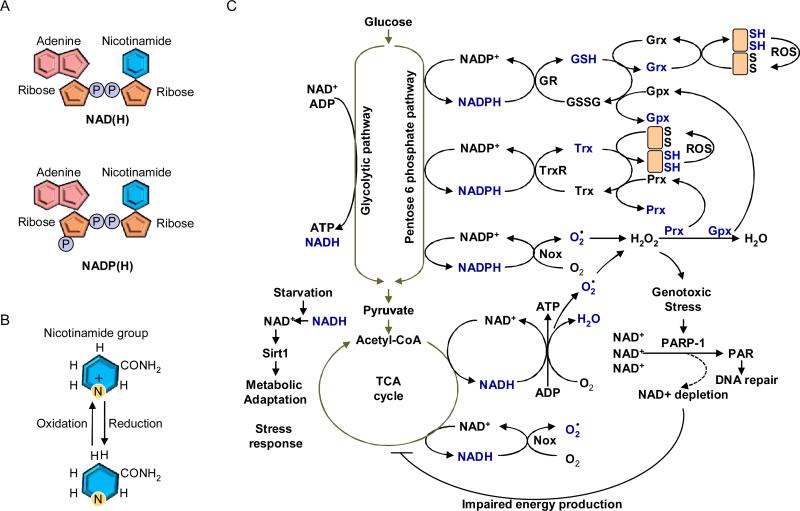Figure 1.
(A) Schematic structures of NAD(H) and NADP(H). Adenine and nicotinamide connect to ribose unit. Those riboses connect each other through pyrophosphate. NADP(H) has a third phosphate group connected to the ribose unit of adenosine. (B) Oxidized and reduced forms of nicotinamide group. Nicotinamide group of NAD+ and NADP+ acquires two electrons to convert to NADH and NADPH, respectively. (C) Overview of the biological roles of PNs as electron carriers and signal mediators. NADP+ is reduced by the pentose phosphate pathway. The NADPH is utilized for scavenging ROS as well as reducing oxidized proteins through Trx and GSH systems. NAD+ is reduced by several catabolic pathways such as the glycolytic pathway and the tricarboxylic acid (TCA) cycle. The electron provided from NADH is transferred to the electron transport chain to convert ADP into ATP. Noxs utilize both NADH and NADPH as electron donors. Genotoxic stress including ROS, damages DNA, which is recognized by PARP-1. The highly activated PARP-1 facilitates poly ADP-ribosylation, an important step in DNA repair, resulting in depletion of NAD+. Energy production is impaired when NAD+ is depleted. Under starvation conditions, nutritional catabolism is attenuated, which results in an increased NAD+/NADH ratio resulting in activation of Sirt1. Grx: Glutharedoxin; Gpx: Gluthathione perodixdase; Prx: Peroxiredoxin.

